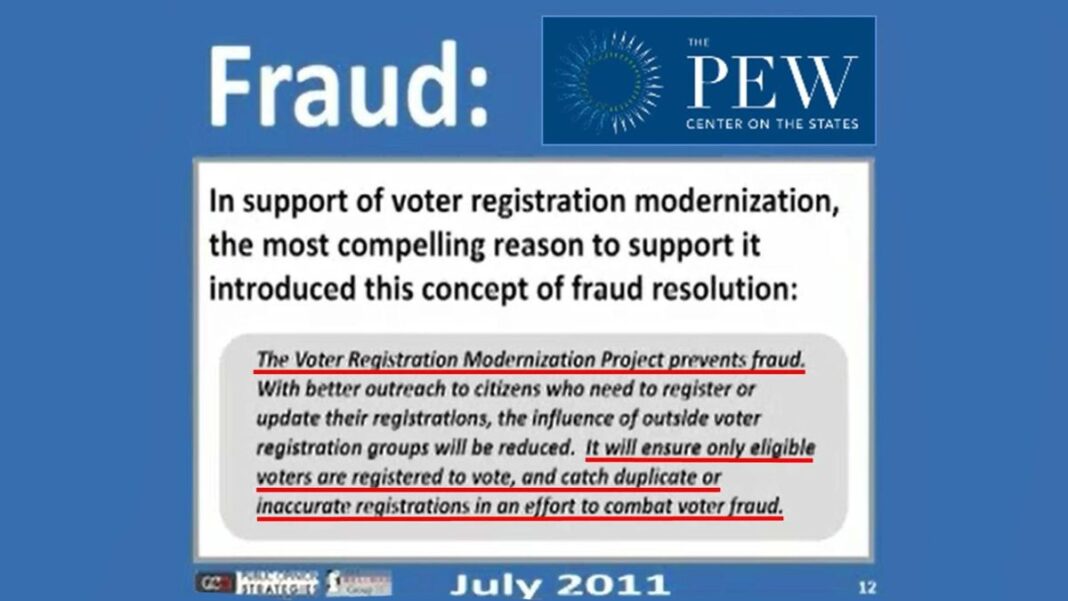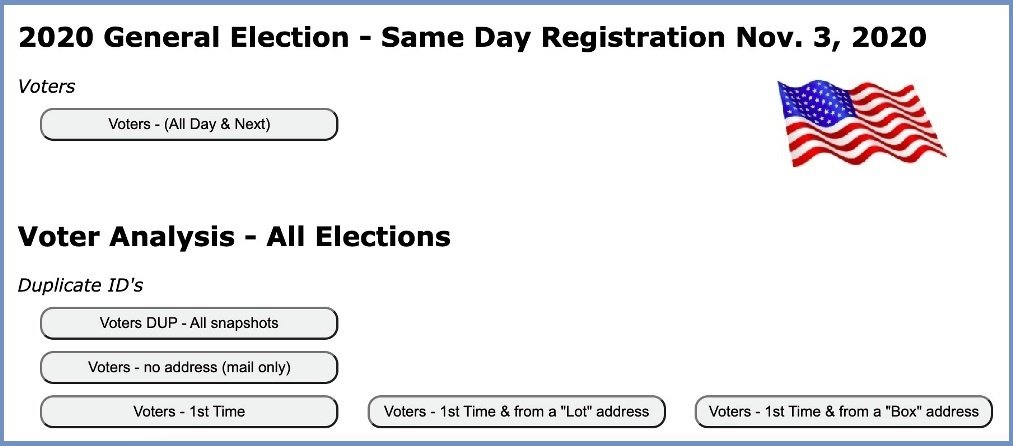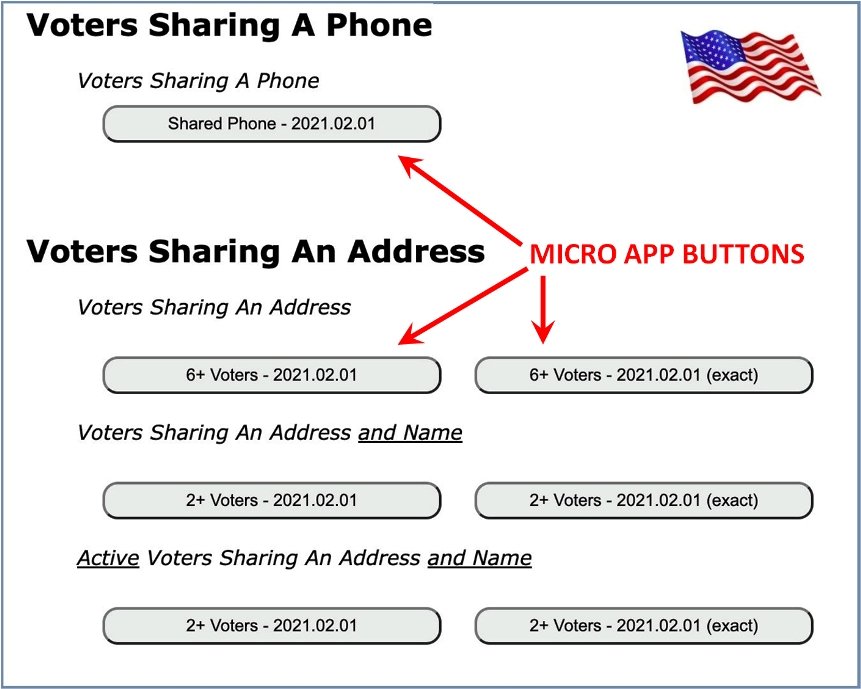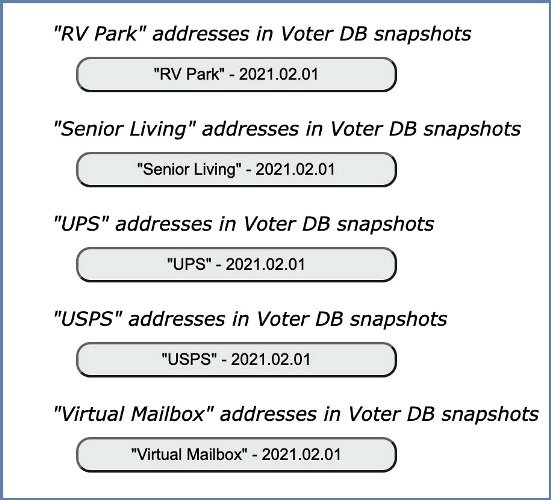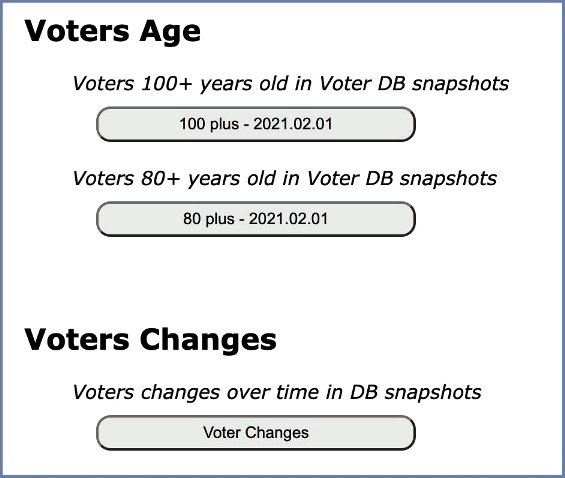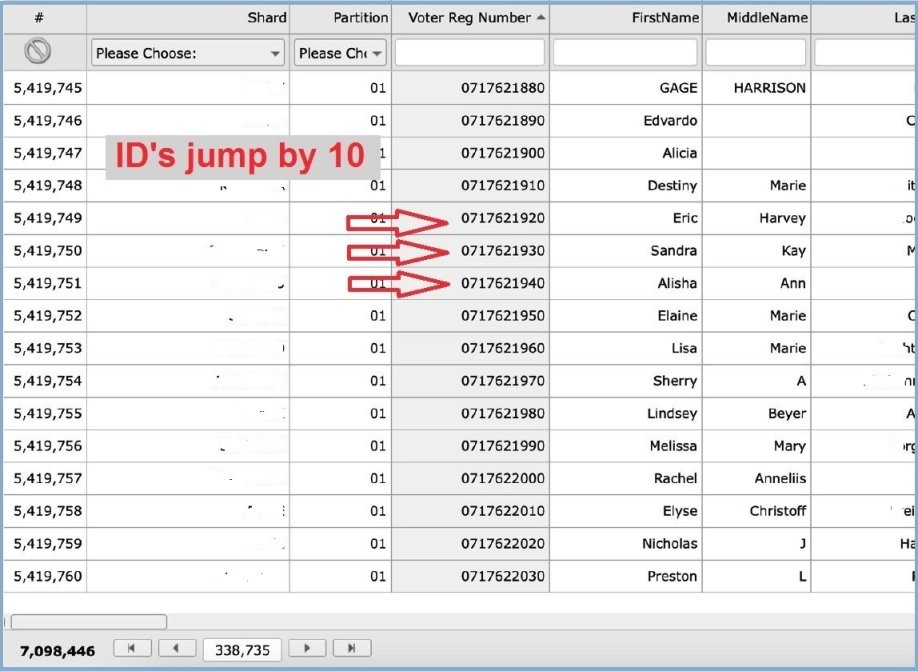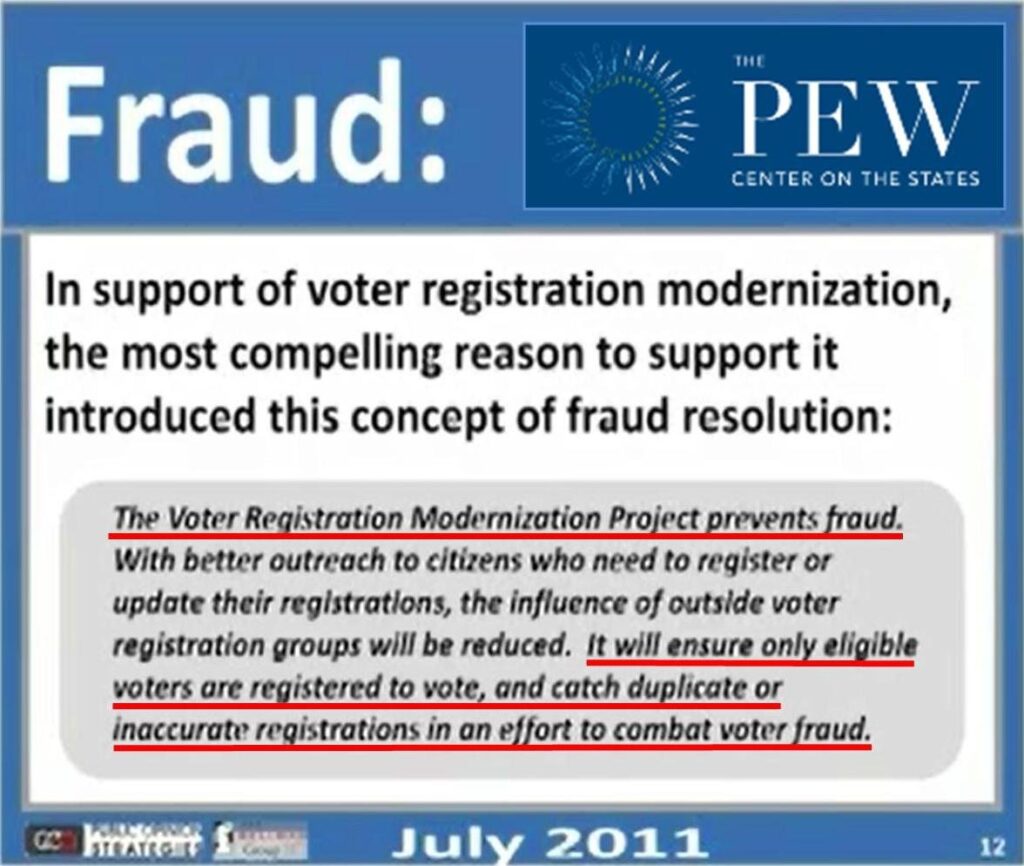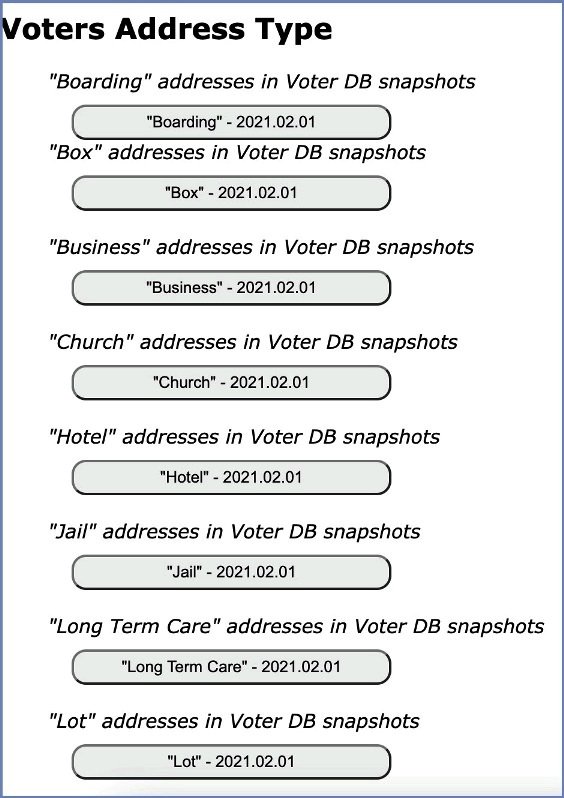
After a decade of frustration over the ERIC voter information center, election jurisdictions and other groups now have an alternative to cleaning registration systems. Everything’s Bigger in Texas!
There is now a substitute for the partisan ERIC voter information center. Election jurisdictions and other qualified groups have a new alternative to cleaning registration systems. Everything’s Bigger in Texas!
A group in Texas is successfully exposing the numerous flaws in our voter registration data. They intend to provide views of voter registration data from every State while targeting the anomalies. They recognized the lack of access or transparency in voter rolls is a major problem. Some election jurisdictions charge from $12,500 to $30,000 for the voter data. Some provide it free, daily, weekly, or monthly. More importantly, the new system includes “Micro Apps” programmed to look at areas where voter anomalies occur. The team prefers the word “anomalies” instead of “fraud”. The speed of the systems is stunning and called “Fractal Programming”, a tech discussion for another day.
The Fractal Programming Election Integrity System (FPEIS) is currently running over 1 billion records on computers that can fit in your hand (called a NUC). Every record can be accessed from a PC or phone, at speeds a thousand times faster than a traditional database, and faster. There are currently 13 States running all current capabilities in the system. Another 14 expect to be live in a handful of weeks. The FP Team expects to have 3.5 billion records and all U.S. States in the system by Spring. FPEIS is now one of the largest online systems in production. For comparison, it’s ten times the size of the AT&T billing system.
The Fractal Programming Team are not just technology gurus. They’ve built some of the world’s most sophisticated criminal profiling systems, some used by law enforcement. They are industrial-scale fraud detection experts and profilers. They’ve worked on massive projects from the TSA to federal health care programs, insurance fraud, even online auction fraud. They’ve found fraud other teams have missed, including the FBI. They have a deep understanding of criminal behavior. They recognize this behavior in our elections will continue until the fraudsters are caught, or exposed nationally.
Numerous States and other election jurisdictions are currently working directly with the FP Team.
Using the Fractal system takes just a few seconds. For instance, you want to see residencies where 6 or more voters share the same address. You select the State, then select the appropriate “Micro App”. These are capsule-shaped buttons with labels. You click the [6+ Voters] button and within seconds the results appear. The addresses with the most registrations are listed first. Some results are just shocking. Another click provides a map or satellite view to learn if an empty lot, Church’s Chicken, and so on.
ADVANCED MATCHING:
These “Micro Apps” provide a huge advantage in evaluating voter fraud. They are predetermined profiles that aim users in the direction of potential anomalies. The simplicity of the system and the predefined capsule buttons make it easy to use. Even if you’re a volunteering grandmother. Numerous States and election jurisdictions are working directly with the FP Team.
The FP Team continues to collect numerous data sets that will expose more anomalous behavior. The system already includes locations for hotels and motels, churches, UPS and USPS locations, RV parks, nursing & retirement homes, dorms, colleges, rehab centers, virtual mailbox firms, correctional facilities, and much more. It exposes the massive amount of registrations associated with these type locations. In early testing, FPEIS found a tenfold increase (3k to 30K) in anomalous registrations after implementing these new algorithms and data sets.
For instance, if interested in collegiate voters you select the State, then maybe the Micro App for Sororities. Those female Greek houses with the most registered voters are listed first. You can then quickly sort by age and gender. Voila! It discloses thousands and thousands of voters over the age of 25 living at Sororities. And hundreds of men too! Ballots should not be provided until these registrations are corrected. The easiest to understand Micro Apps are those associated with age. They instantly display everyone registered over the age of 80, or 100.
Another example is the Micro App called “Shared Phone”. It displays all voter registrations using the same phone number. Thousands of registrations have the 000-000-0000 phone number. However, more unique phone numbers show dozens, sometimes hundreds of registrations using the same number. Our simple explanations about these Micro Apps and their use are only part of the system. Certain ongoing initiatives and other capabilities are under wraps for now. GP will provide updates when that news becomes available.
Currently, FPEIS is only being provided to established voter integrity groups, State and County election jurisdictions, and political parties. In order to do this, to make it available nationwide, the team had to split from its original funding source, a truly good guy. Because of this, funding is needed ($3-$4mil) to expand detection into additional areas and all the States. The FP Team is looking for donors who can provide major gifts or those who have access to people with this type of wealth. Interested parties can contact Jay at ContigencySales.com. Crowdfunding is not an option at this time.
COMPARISON ENGINE:
One of the most intriguing features is the ability to monitor changes in the voter rolls. Especially from one day to the next. Any database can be compared against any other database, regardless of size. The differences appear instantly and are fully categorized. A “snapshot” represents each time a new list is obtained from the same election jurisdiction. In one State, a snapshot of voters were shown to have cast ballots in person. A later snapshot discovered the same voters were changed to voting via an absentee ballot. Honest election officials who oversee any voter registration database should implement this engine immediately.
In the coming Nov. 8th election FPEIS will be taking snapshots daily from certain states. It will not only monitor voter registrations but data on who cast ballots. It will compare them instantly and provide a text or email about anomalies. This “management by exception” reporting is the first time in any U.S. election voter integrity teams can identify fake or phantom anomalies. This is done before they become official records. Corrective action can be taken immediately before the ballot is counted.
FPEIS can also expose thousands of odd registrations that might be added before an election. It will notice if they are removed days after they voted, and several other anomalies. The engine can monitor registrations in the 3-4 months leading up to an election, and long afterwards. It can highlight any changes, even down to a comma. County voter rolls are currently being compared against the voter rolls in their Sate’s system. The differences are categorized and reported instantly and providing interesting results.
In a separate project, the FP Team has successfully built the capabilities to help identify potential voters who may have voted in two or more states, or claimed residence in multiple States. The team expects to enable national searches for this issue, by any State, very soon.
FPEIS is not just providing data online. They analyze the data relentlessly. In another example, they noticed jumps in Voter ID sequencing. Most Voter IDs are created one number after the next like 151, 152, 153, and so on. Some registration system mysteriously change. They start assigning new Voter IDs in blocks of ten like 160, 170, 180, and so on. This leaves 9 unallocated Voter ID numbers that could be backfilled by fraudsters. See below example.
Their Fractal Programming technology is in use by several commercial clients. These clients have over 50,000 users accessing those projects. Because this is proven technology, users of FPEIS can be added by the dozens as demand swells to access voter registration data. The FP Team continues to receive interesting datasets that may greatly enhance that supplied by the States. One example is a list of 150,000 names who may have voted in multiple states. Numerous steps are taken to validate source data to ensure its integrity before being added to the system.
The system provides “in your face” views of how corrupt our registration data really is. The FPEIS team has met with several Secretary of State’s and numerous election officials. The data displayed was provided by these exact same officials, sometimes at a substantial purchase price to FPEIS. During the presentations, officials denied the data they were seeing was real, claimed it wasn’t theirs. Some became verbally, even visibly pissed off. They simply could not believe the numerous anomalies. One thing became clear. Election official had never seen their data this way, or with such speed. Their existing systems can’t or won’t provide the insight they need.
Many election officials have canned answers and excuses to explain away anomalies. Wisconsin had over 550,000 voters with a registration date of 1918. Their officials said it happened during their migration to a State-based registration system. If the registration date was unknown, the 1918 date was used as a “placeholder”. But that was 16 years ago, and it still hasn’t been fixed. When answers during registration are unknown, using a “placeholder” is a horrible practice. It should be banned from the voter process.
FPEIS is currently reliant on voter integrity groups, election jurisdictions, state legislators, political campaigns, and so on to get these voters’ rolls fixed. If the best and brightest in our society can come together around this project, it can certainly evolve into something more substantial. Changes in voter registrations rolls might become mandated, regulated, or law. Two of the strongest voter registration warriors, Judicial Watch and Public Interest Legal Foundation, should certainly look into FPEIS.
The foundation of FPEIS is solid and the technology is proven. Because of this, an NGO or similar organization could use it as their underlying architecture. Why not create a business model that cleans State or County voter registration rolls as a paid service? It’s entirely possible authorized individuals with proper clearances could fix these voter rolls. They might also be allowed access to privacy-protected DMV/MVD data too. This would certainly enhance the capabilities of FPEIS. It’s worth noting the EAC refuses to provide voter roll inspection or cleaning services. Their most significant effort was a “List Maintenance Month” back in 2018. A handful of online meetings were held with lefty election speakers.
How did our voter registration data get so convoluted? There are numerous reasons, some nefarious. The online voter registration systems used by States have flaws, especially when insiders are given massive access to them. Registration systems should never accept a birth date over 110 years of age, a faulty or missing street name, no street number, allow a 99999 zip code, and so on. If garbage goes in, this same garbage goes out to the public as voter lists. It was again Pew who relentlessly pushed States toward adopting online voter registration in 2009-12. They lied, see their July 2011 presentation to California below.
FPEIS ORIGINS:
How did FPEIS come about? It was a phone call from a “good guy with a gun”. A concerned Sheriff about a year ago contacted the team. He had 2020 election fraud concerns. Some of the top criminal profilers in the world were brought in. The profilers immediately had no interest in investigating this fraud. The fraud was obvious. Numerous groups had already compiled overwhelming evidence. The profilers did make some critical connections. The 2020 election was not the fraudsters’ first time, just too many moving parts. Also, because it was hugely successful, the fraudsters’ best efforts are yet to come.
The profilers saw the 2020 election fraud at such a massive scale they feel it moved to the category of a “Sovereign Crime”. The simplest definition is that the government was a participant. Either as operatives enabling the fraud, or compliant when it happened around them. Elected officials refusing to clean voter rolls or refusing to check ballot signatures are a couple examples. Refusing to investigate even the most shocking examples of voter fraud is another sign officials were submissive participants. Fortunately, fraud produces patterns. When these emerge it helps with eradication.
Some of the voter data provided to the public are unusable when first obtained from election jurisdictions. For instance, data is supposed to be comma-delimited. A comma separates one field from the next (firstname,lastname,streetnumber,). But the commas are gone in many data sets. In other cases, non-ASCII characters are embedded in the data, or control characters are deliberately inserted to prevent typical searches.
FPEIS includes processes that make data into useable and readable formats. Voter integrity groups no longer have to struggle using Excel and such. Volunteering with a regional or national voter integrity group, or possibly a political campaign, is the only way to access FPEIS for now. The intended purpose of this project is to force change and for now, these groups are in the best position to do that. Lists of organizations that use FPEIS will hopefully be provided soon.
After the 2020 election, no one really knew how many legitimate Americans were actually registered to vote. The fake news media scurried to manipulate math. Even the APNews gave up, provided a massive range saying between 195 and 215 million people were registered to vote. According to recent US Census data (4a), 168 million registered in the 2020 election. But they also say, on average, that about 71% of citizens actually register. There is a massive mess to clean up inside our American voter registration systems.
There is an endless lists of radical left-wing organizations and donors trying to influence our elections and corrupt America’s democracy. They are a giant industry of their own making.
Gateway Pundit reports on these groups regularly. One GP commenter laughingly always says “But we have Rona!” (meaning Ronna Romney McDaniels). The fact is that GP rarely sees any RNC initiatives intended to counter this massive industry from the left. The RNC should help FPEIS obtain the funding they need and without conditions.
By Jim Hoft

